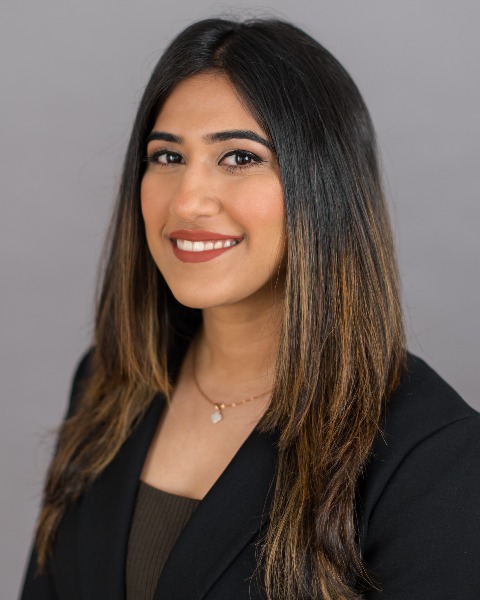Sunday Poster Session
Category: Interventional Endoscopy
P1399 - Utilizing Circumferential Endoscopic Submucosal Dissection for Early Esophageal Neoplasia
Sunday, October 26, 2025
3:30 PM - 7:00 PM PDT
Location: Exhibit Hall

Sabah Sikander, DO (she/her/hers)
Baystate Medical Center
Springfield, MA
Presenting Author(s)
Sabah Sikander, DO1, Moiz Ahmed, MD2, Hafiz Muzaffar Akbar Khan, MD3, Venkata Muddana, MD4, Kais Zakharia, MD1
1Baystate Medical Center, Springfield, MA; 2Community Health Network South, Indianapolis, IN; 3AdventHealth, Tampa, FL; 4TriHealth, Cincinnati, OH
Introduction: Endoscopic Submucosal Dissection (ESD) is a minimally invasive technique developed in Japan that allows for en bloc resection of neoplastic lesions in the gastrointestinal tract. Circumferential ESD (cESD) is an advanced technique in which the entire circumference of the esophageal mucosa and submucosa is resected en bloc for early stage and primarily superficial esophageal cancers
Methods: We conducted a retrospective review of 9 cases of cESD performed by multiple advanced endoscopists across different hospitals in the United States. Data collection included indication for the procedure along with biopsy findings, intra and post procedural complications.
Results: Of the 9 cases reviewed, en bloc resection was achieved in all cases and all but one had histologic confirmation of R0 resection. Stents were placed in 6 of the 9 cases for stricture prevention, and 3 of those also received triamcinolone. Post procedure stricture formation occurred in 67% of the patients, regardless of intraprocedural stricture prevention strategies, all of whom required multiple sessions of balloon dilation and steroid injections. 1 out of the 9 patients developed a severe complication due to esophageal perforation requiring extended ICU stay and surgical intervention. Recurrence was noted in only 1 of the 9 cases that did not achieve R0 resection.
Discussion: ESD as a technique overall has an increasing role in the West in treatment of esophageal neoplasia. Patients with early circumferential esophageal neoplasias were traditionally treated with esophagectomy but cESD offers patients a less invasive alternative especially for those that are not surgical candidates. Post ESD stricturing is a well known adverse event as noticed in 67% of the cases we reviewed. Rare but serious complications, such as esophageal perforation, is also a risk. With careful patient selection and follow up, cESD should be considered more often in the management of esophageal neoplasm.
Disclosures:
Sabah Sikander indicated no relevant financial relationships.
Moiz Ahmed: Lumendi LLC – Consultant.
Hafiz Muzaffar Akbar Khan indicated no relevant financial relationships.
Venkata Muddana indicated no relevant financial relationships.
Kais Zakharia indicated no relevant financial relationships.
Sabah Sikander, DO1, Moiz Ahmed, MD2, Hafiz Muzaffar Akbar Khan, MD3, Venkata Muddana, MD4, Kais Zakharia, MD1. P1399 - Utilizing Circumferential Endoscopic Submucosal Dissection for Early Esophageal Neoplasia, ACG 2025 Annual Scientific Meeting Abstracts. Phoenix, AZ: American College of Gastroenterology.
1Baystate Medical Center, Springfield, MA; 2Community Health Network South, Indianapolis, IN; 3AdventHealth, Tampa, FL; 4TriHealth, Cincinnati, OH
Introduction: Endoscopic Submucosal Dissection (ESD) is a minimally invasive technique developed in Japan that allows for en bloc resection of neoplastic lesions in the gastrointestinal tract. Circumferential ESD (cESD) is an advanced technique in which the entire circumference of the esophageal mucosa and submucosa is resected en bloc for early stage and primarily superficial esophageal cancers
Methods: We conducted a retrospective review of 9 cases of cESD performed by multiple advanced endoscopists across different hospitals in the United States. Data collection included indication for the procedure along with biopsy findings, intra and post procedural complications.
Results: Of the 9 cases reviewed, en bloc resection was achieved in all cases and all but one had histologic confirmation of R0 resection. Stents were placed in 6 of the 9 cases for stricture prevention, and 3 of those also received triamcinolone. Post procedure stricture formation occurred in 67% of the patients, regardless of intraprocedural stricture prevention strategies, all of whom required multiple sessions of balloon dilation and steroid injections. 1 out of the 9 patients developed a severe complication due to esophageal perforation requiring extended ICU stay and surgical intervention. Recurrence was noted in only 1 of the 9 cases that did not achieve R0 resection.
Discussion: ESD as a technique overall has an increasing role in the West in treatment of esophageal neoplasia. Patients with early circumferential esophageal neoplasias were traditionally treated with esophagectomy but cESD offers patients a less invasive alternative especially for those that are not surgical candidates. Post ESD stricturing is a well known adverse event as noticed in 67% of the cases we reviewed. Rare but serious complications, such as esophageal perforation, is also a risk. With careful patient selection and follow up, cESD should be considered more often in the management of esophageal neoplasm.
Disclosures:
Sabah Sikander indicated no relevant financial relationships.
Moiz Ahmed: Lumendi LLC – Consultant.
Hafiz Muzaffar Akbar Khan indicated no relevant financial relationships.
Venkata Muddana indicated no relevant financial relationships.
Kais Zakharia indicated no relevant financial relationships.
Sabah Sikander, DO1, Moiz Ahmed, MD2, Hafiz Muzaffar Akbar Khan, MD3, Venkata Muddana, MD4, Kais Zakharia, MD1. P1399 - Utilizing Circumferential Endoscopic Submucosal Dissection for Early Esophageal Neoplasia, ACG 2025 Annual Scientific Meeting Abstracts. Phoenix, AZ: American College of Gastroenterology.
